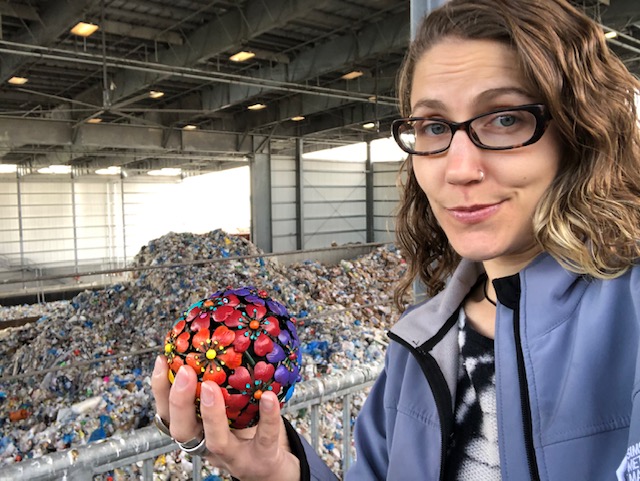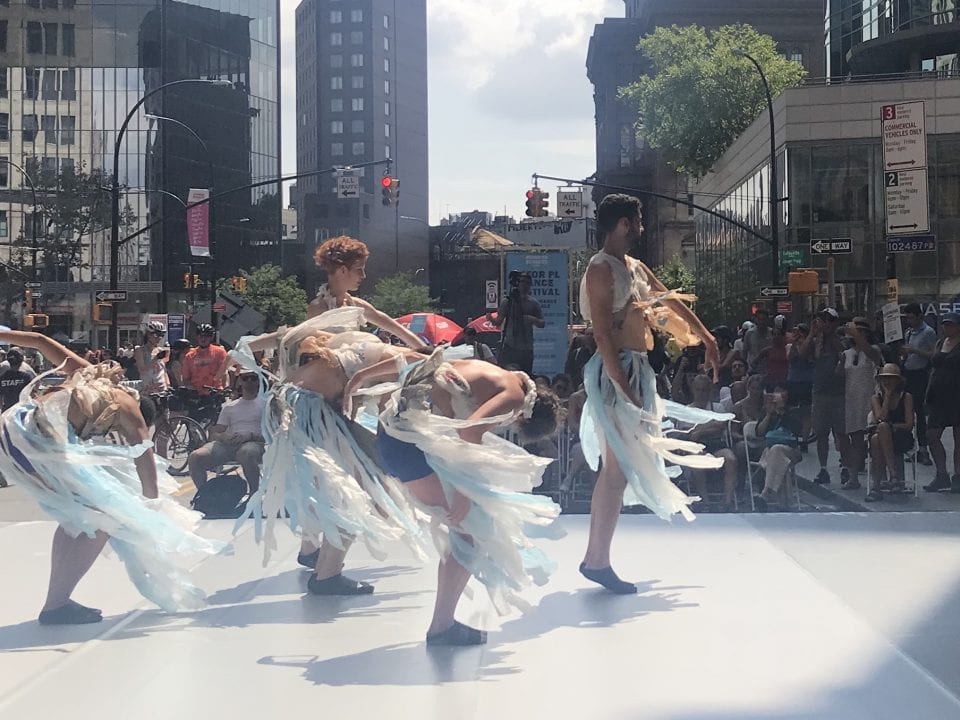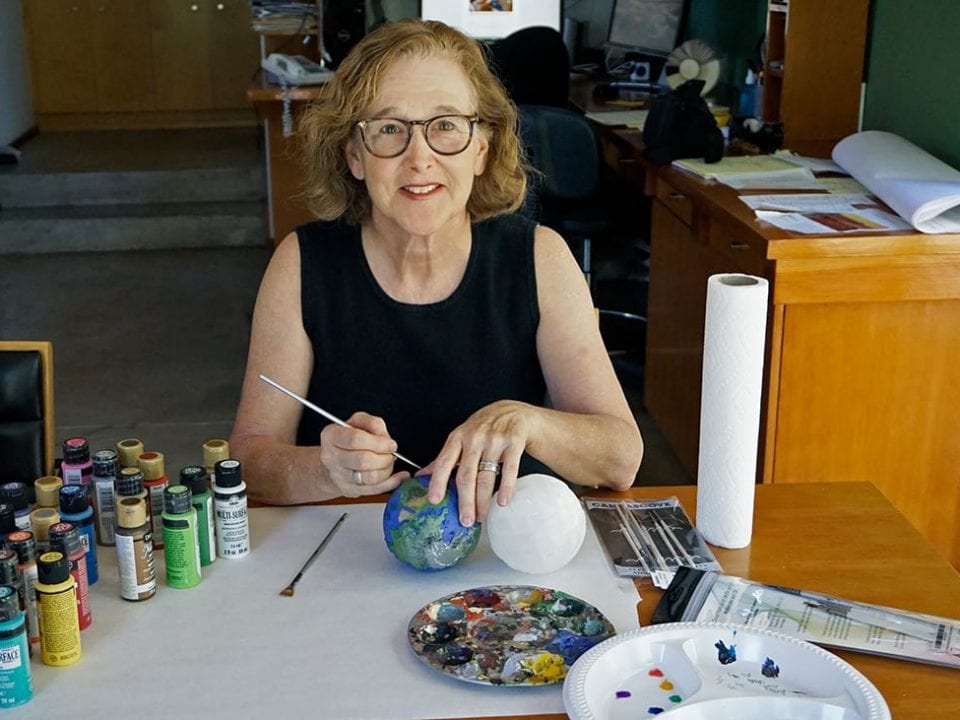- Did you receive a globe? Congratulations! Click Here for the Next Step!

Repeat Encounters, Shifting Culture
October 11, 2019
THOUGHTS ARE THINGS
January 30, 2020Remember Your R’s
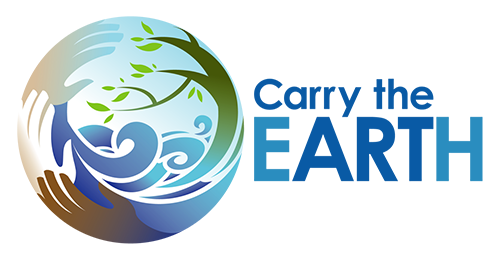
About a year ago I started working here…
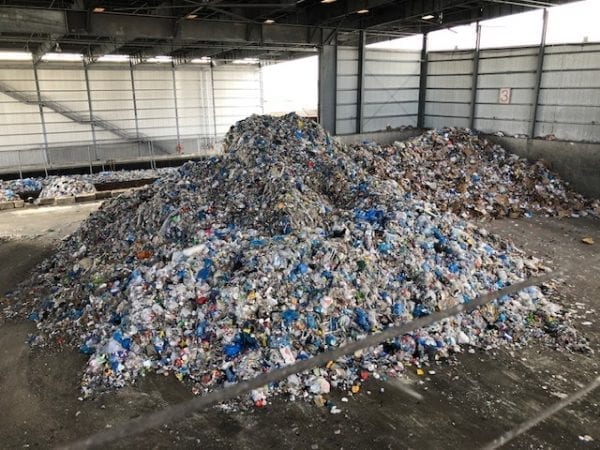
Less than half a day of NYC’s residential recycling from the blue bin (metal, glass, hard plastic, and cartons).
Okay so I don’t actually work in this pile, but my work is all about it. This is a picture of less than half a day of New York City’s residential recycling, all of which comes to a place called Sims Municipal Recycling, a Materials Recovery Facility located on the waterfront of Sunset Park Brooklyn. That is where I work.
This Materials Recovery Facility (MRF) receives and sorts most of NYC’s residential and public school recycling. After sorting, we sell the materials to companies that will make them into new products. Sims receives recyclables from all five boroughs, totaling at about 1,000 tons of materials each day. As I tell the kids, that’s equal to about 200 medium sized elephants. Yeah…that’s a lot of elephants.
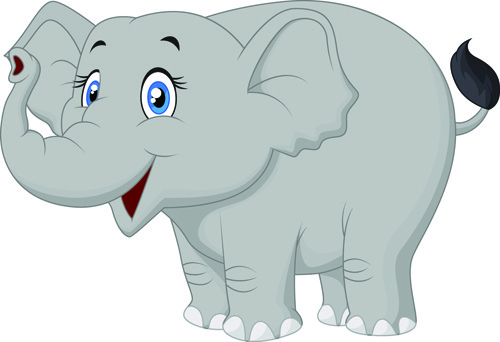
(This little cutie times 200 = NYC’s daily curbside recycling tonnage.)
So what happens to your recycling after you place it into the correct bin? Well, it goes on a journey, and as Sims’s Outreach and Education Coordinator, each day I share this journey with students and adults of all ages: The Journey of NYC Recyclables. Basically, I teach people how to recycle better. Uhu, I love my job. So shall we go on a little journey?
First, it’s important to note that the Sunset Park MRF receives recyclables only. We don’t receive any trash. If something ends up in the trash bin, even if it is a recyclable, if it’s in the trash, it won’t be recycled. Trash/garbage is bound for one of the many landfills or incinerators that NYC ships its waste to. This will be the case in most if not all municipalities. It has to end up in the right bin to be recycled. This leads me to another important distinction, the difference between what we call trash/garbage and what we call a recyclable.
Now it doesn’t take a second grader long to identify this difference. Aside from one going in the trash bin and one going in the recycling bin, they understand that a recyclable is a material that can be made into something new. Therefore, a recyclable is valuable and useful and should not be wasted and left to sit for a very (sometimes veeeeeeeery) long time in a landfill. Trash on the other hand is a material that is not currently being collected on a wide scale and made into new things. While any material or product could technically be recycled, it will come with a price, and there are some materials that for many reasons simply haven’t developed a market, possibly because it would just be too challenging to break them down and reprocess them.
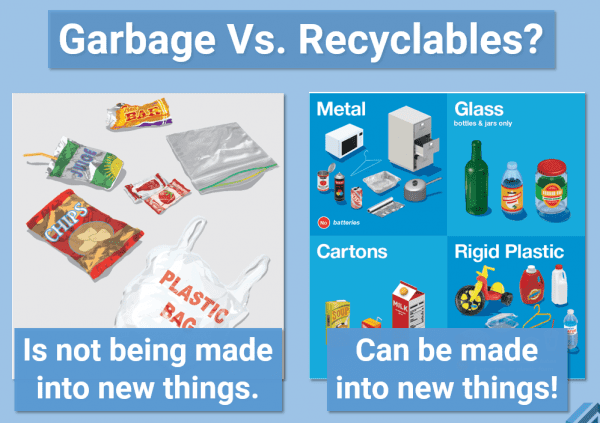
(Yes, there are ways of recycling plastic bags, but not in any curbside recycling program I know of in the USA. Generally, they need to be taken back to stores that give them out.)
In New York City, our recycling program accepts a wide range of materials. Take note, this is not the case in all recycling programs. Recycling will look different depending on where you are in the state, country, or world. But here in NYC, we encourage you to recycle all of your hard plastic (no soft plastic please, like wrappers or bags!), metals (anything that is at least 50% metal), glass (bottles and jars only), and cartons (yes…they go in the blue bin and NOT with the paper). A big part of my job is just clarifying what goes in the bins. If you are concerned about what you can recycle, just check your municipality’s website! They want you to succeed and will likely have a clear list of what you can and can’t leave out for recycling. In NYC, the Department of Sanitation (DSNY) website provides a lot of great resources – https://www1.nyc.gov/assets/dsny/site/home. (Additionally, the DSNY workers are rock stars, but that’s another story.)
Okay, so let’s say you’ve made it past step one. Like a champ you checked your local website and have discovered that (yes!) you can recycle that aluminum tray, or other whatever material. You put it in the bin and leave it out on the correct day in the appropriate container or bag, again, whatever your municipality asks for (check that website!). Your recyclables will then be collected and most likely brought to a MRF similar to Sims, but probably smaller, as Sims is the biggest in the USA (this is where I tell you to come tour Sims, cause it’s pretty awemazing – website for booking a tour). The MRF will sort out the different types of materials, metals, glass, plastic, maybe paper as well. They will also remove the trash, yeah, that stuff that never should have been placed in the recycling bin but was anyway. Some recycling programs may be more strict than others about how clean materials should be, or about how much trash (non-recyclables) can be in the mix.
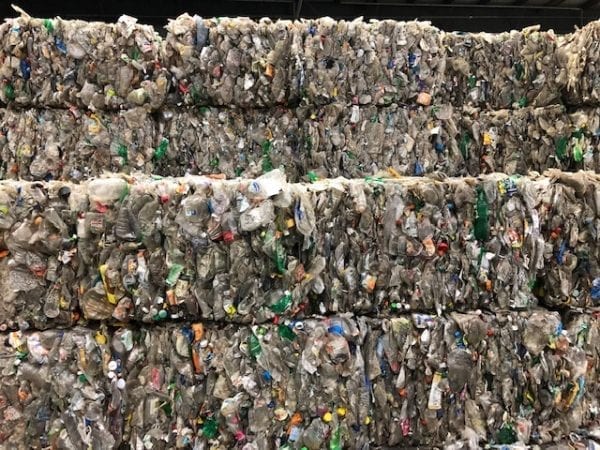
After the MRF sorts, they crush the materials into tightly compressed cubes called bales. The bales are sold to reprocessors who will use whatever method the material requires to break it down and start making it into a new product that brands can buy, use, and sell back to consumers, who will hopefully continue the loop and keep recycling.
That’s basically the story, but there is So. Much. More. And if you got this far reading a blog written by a girl nerding out about waste and recycling, you probably have questions, which is great. Have questions! When you read flashy media articles that contain frightening percentages and predictions about recycling, have questions. When someone tells you that a recycling bag is as good as trash if it contains a dirty yogurt cup or a few pieces of trash (usually this is not true), have questions! Get the whole story, or as much of it as you can.
Look, waste is a BIG issue, because we create soooooo much of it every day and we are not slowing down. Waste is probably the thing American’s are best at producing. And the waste we create has a price, both monetarily and environmentally. The really tricky thing about waste though, is that it is invisible. We throw things “away” and they seem to magically disappear, so we just don’t realize the impacts, but the truth is, waste doesn’t disappear. It goes on long journeys that have BIG impacts on our planet and our lives.
Seems like my story just took a turn doesn’t it? Well it did. Everyday I teach kids and adults about recycling, how it works, what cool technologies we use to sort the stuff you recycle, what recycled materials can turn into. It is cool! Sure, recycling is good, it’s helpful, and I want all of you to check your municipality’s recycling website, ask questions, get info, and be all around awesome recyclers. But the big message is this. Recycling is not the answer to our problem of mounting waste production. It’s those other two R words that are far more important. Remember them?
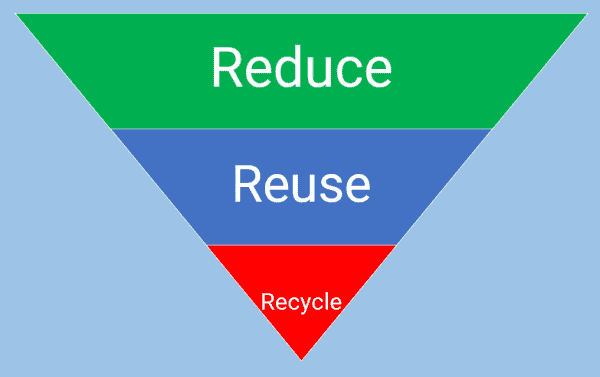
Number one – REDUCE! Use less stuff and you’ll make less waste. Simple. Beautiful. Seems to be a big challenge though. And having disposable products constantly sold to us doesn’t make this practice any easier. You have to work at it, and we as a society will have to make some big changes to really practice reducing. Somethings, you just have to Refuse (a favorite R word of mine).
Number two – REUSE! And yes, that means buy the reusable water bottle, coffee mug and shopping bag. But more than that, buy stuff that will last. When you need to make a purchase, buy the thing that is durable. Buy the thing that you can Refill, Repair, Repurpose, Refurbish, Replace Parts (oh my all these terrific R words!), so it won’t become waste next week, or even next year.
So that’s my story, and that’s my message, the message I am constantly exploring and attempting to find engaging ways to express to people of all ages. Come on by Sims for a tour if you find yourself in Brooklyn (website!!!). I’d love to hear your thoughts, talk about your questions, and let you see the pile for yourself.
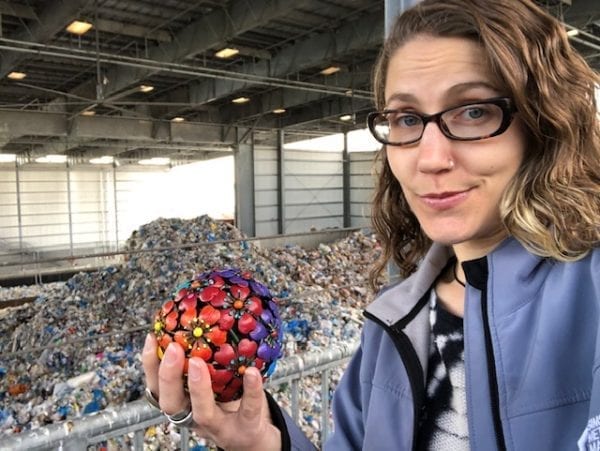
If you’re a fan of music, here is my message in song… https://youtu.be/Xk445gWZ0qU
